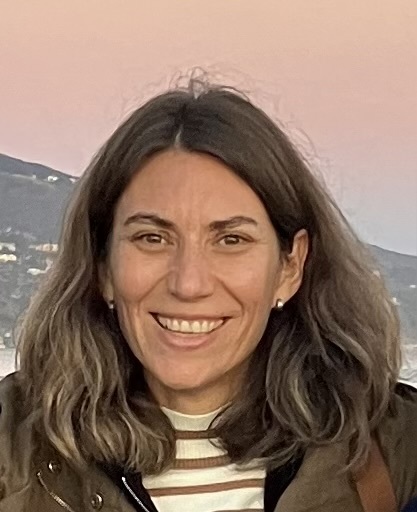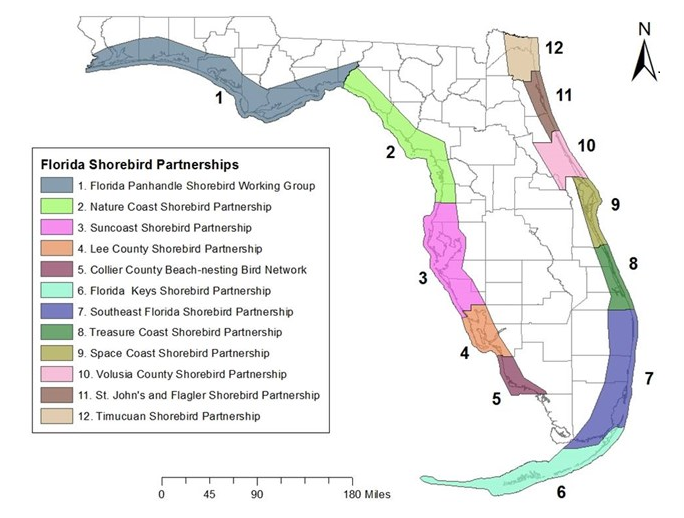Events:
February 2-8: Florida Winter Shorebird Survey
Pre-season Partnership Meetings:
February 20: Nature Coast. Email Jennifer Eells (Jennifer.Eells@MyFWC.com)
Save-the-Date: Florida Winter Shorebird Survey
February 2-8, 2024
Florida’s Annual Winter Shorebird Survey starts on Friday, February 2nd and continues through Thursday, February 8th. This week-long survey serves as the official statewide snapshot of coastal wintering shorebirds and seabirds in Florida. Please check the FSA website and Facebook group on January 21st for more details and to participate. We hope you enjoy this fun and challenging winter survey. Thank you for continuing to participate!

Welcome, Florencia Morales!
Please welcome our new Florida Shorebird Alliance Coordinator, Maria Florencia Morales! Florencia has years of international experience as a leader and coordinator of community-based conservation programs, including the formation and coordination of the Argentinean Network of Private Natural Reserves. She brings skills and experience in leading local conservation initiatives including program development and coordination, network and partnership organization, and community engagement. We are excited to have her in her new role as FSA Coordinator!
|
 2022 Seabird Abundance Estimates
We are excited to share the 2022 statewide abundance estimates for black skimmers and least terns!
We used data entered into the Florida Shorebird Database by monitoring partners around the state to estimate the abundance of the two focal seabird species: black skimmer and least tern. The statewide abundances below include both rooftop- and ground-nesting and are reported as number of individual breeding adults.
We grouped data in both space and time to account for possible bird movement for each species. Each abundance estimate is presented alongside 95% confidence intervals, which represent variance in the data. Of the total statewide abundance of breeding least terns in 2022, 36% nested on rooftops and 64% nested in ground colonies. In 2022, around 2% of the black skimmer population nested on rooftops.
Species
|
2022 Statewide Abundance
(Individuals)
|
95% Confidence Interval
|
| Black skimmer |
7,052 |
6,302 - 7,804 |
| Least tern |
13,079 |
10,945- 15,215 |
| |
|
|
It is possible to accurately estimate the breeding abundance of the focal seabird species thanks to the annual comprehensive survey coverage by FSA monitoring partners. Your contributions make this work possible!
For more information about how the abundance estimates were calculated, see the 2020 Monitoring Data at Work Report and the Seabird Abundance Estimates webinar, or contact FLShorebirdDatabase@MyFWC.com.
Photos by Jean Hall.
 |
The FSD: A Living Database
Each year after data are collected and entered by FSA monitoring partners, the data review team examines everything and works with partners to make corrections, if needed. This process is part of the FSD's quality control - it's how we make sure that the data in the FSD are standardized and ready to be used in management and research. But this annual review process is just the beginning of an entire cycle of data quality!
Once the initial review is complete, the data get archived to make room for the next year's data. But did you know that the archived data can change too? We check the data for anomalies every time we run an analysis. If we find anything unusual, we reach out to monitoring partners to make sure we understand. And if we find any errors, we fix them - no matter how old the data are. The corrections are usually minor, but each change makes the FSD dataset a little bit better.
But if the data can change, what does that mean for analyses like the abundance estimates? Most of the time, the corrections are too minor to make a difference but sometimes we see the numbers shift slightly. If you notice any differences in the abundance estimates from year to year, that's quality control in action! Just remember: the latest numbers are the most reliable.
The FSD is a living database: it continues to improve as we find anomalies and fix errors. Quality control is an iterative process that provides reliable data for advancing the conservation of shorebirds and seabirds. Check out the 2022 Monitoring Data at Work report to learn more about quality control in the FSD. Email FLShorebirdDatabase@MyFWC.com if you have any questions!
 The Florida Shorebird Alliance is comprised of 12 partnerships across the state. If you'd like to learn more and get involved in your local partnership, email shorebird@MyFWC.com.
You can also join the flock on social media: Florida Shorebird Alliance Facebook Group
|